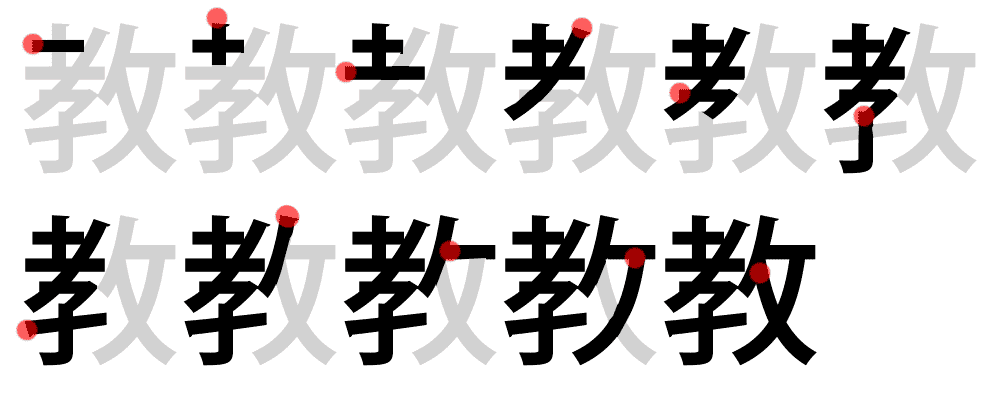Kanji: 教 teach
JLPT N4 | Japanese Grade 2 (Elementary) | 11 Strokes
教
On: キョウ
Kun: おし.える; おそ.わる
Meaning: teach; faith; doctrine
The kanji 教 is commonly used to express the act of teaching or educating. It appears in various contexts related to education, instruction, and learning. It is also used in words related to religion or belief systems, indicating the concept of a doctrine or faith.
教 Kanji Parts:
- 孝 filial piety [The top 耂 represents an old man, a bent-over figure with long hair; the bottom is a child 子]
- 攵 strike; hit; looks like walking legs about to strike someone with a kick
This combination of components suggests the idea of imparting knowledge or doctrine, reinforcing the kanji's core meaning of teaching and education.
教 Mnemonic Story:
- The old man sensei teaches the young child 孝 how to kick 攵.
- Imagine a wise elder (孝) striking (攵) a gong to gather students and teach them. The sound of the gong represents the call to learn and embrace knowledge and faith.
教 Stroke Order:

教 Examples:
- 教室 classroom; lecture room
- 教育 education; schooling; training; instruction
- 教会 church
- 教える to teach; to instruct
毎週、教会に行く。
(I) go to church every week.
- 毎週 every week
- 教会 church
- に to
- 行く to go
Other Examples
Note: this is experimental, and while should be correct, there could be errors:
彼は毎日教室で英語を教えている。
He teaches English in the classroom every day.
私たちは新しい教育方法を学んだ。
We learned a new teaching method.
その教会はとても美しいです。
That church is very beautiful.
彼女はピアノを教えるのが上手です。
She is good at teaching piano.
この教わる方法はとても効果的です。
This method of being taught is very effective.



